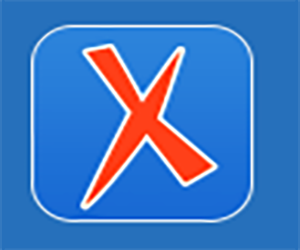This is your main working page for your noncredit online course in DITA Structured Content Creation (oXygen). SyncRO oXygen is the designated authoring tool for this course. If for some reason you cannot acquire oXygen, contact me (David McMurrey).
When you complete a unit, click the complete unit button for that unit. If you mistakenly mark a unit as completed, contact your course guide (or just wait until you've actually completed it.)
Be sure to bookmark this page so that you can easily return.
Links have been removed from this page. To take this fully linked course, contact admin@mcmassociates.io.
Unit 1. Structured Authoring & DITA: Overview
In this first unit, you explore the background of structured writing and topic-based authoring. You learn why they have become so essential in technical communication and how oXygen is an excellent solution for these needs.
Use the DITA Introduction study guide to read DITA and oXygen.
| unit_date: recommended due date for Overview: Course, DITA oXygen |
Unit 2. DITA: Concept & Task Topics
By now you've read that DITA uses three information types: task, concept, and reference. In this unit, you study and practice writing two of those types: task and concept topics.
Note: Since DITA emerged, additional topic types have been defined and added to the specification: general task topic, machinery task topic, troubleshooting topic, glossary entry topic, glossary group topic, and bookmap. See Technical content: Document types
Use the DITA Concept–Task Topics study guide to read about and create a concept and task topic.
| unit_date: recommended due date for Concepts, Topics |
Unit 3. DITA: Reference Topics & Short Descriptions
In this unit, you study the third of the three primary DITA topics. In addition, you read about some useful strategies to enable the all-important short description.
Use the DITA Reference Topics & Short Descriptions study guide to read about and create a reference topic and a short description.
| unit_date: recommended due date for Ref. Topics, Short Desc. |
Unit 4. DITA Maps & Navigation
To this point, you've DITA topic—in fact, the three basic topic types. But something is missing: the glue that holds them all together in a coherent, usable document. And that "glue" is the DITA map, which sequences disparate topics into a logical, complete order.
Use the DITA Maps & Navigation study guide to read about maps and create a project with three topics and map coordinating linking to those topics.
| unit_date: recommended due date for Maps, Navigation |
Unit 5. Formatting DITA Topics with CSS
Formatting documents in DITA is not what it is like in, for example, Microsoft Word. You don't have a bunch of icons at the top of the interface to make things bold or italics, change fonts, or alter page or margin dimensions. Instead, you must use Cascading Style Sheets (CSS). CSS is another course in itself, but you'll see the basics here in this unit and can then learn more n your own.
Use the DITA Formatting study guide to see how to use bold or italics, change fonts, or alter page or margin dimensions.
| unit_date: recommended due date for CSS Formatting |
Unit 6. DITA: Conditional Processing (Single Sourcing)
In the 1990s, technical writers were faced with the daunting problem of producing documents in different outputs such as Word, FrameMaker, HTML, PDF, Help, and more. Making the problem even more daunting was the fact that many of those documents were well over 100 pages and part of libraries that included other documents. The solution was XML which had a wide range of applications and then later DITA which was developed specifically for documents.
Use the DITA Single Sourcing study guide to see to use one set of files to generate different outputs. Instead of having to make changes in each of the output versions of a document, all those changes can be applied to just one set of files—that's single sourcing!
| unit_date: recommended due date for Conditional Processing |
Unit 7. DITA: Producing HTML & PDF from DITA Maps
While outputting HTML is fairly straightforward in most respects, outputting to PDF is not.
See DITA map to HTML for directions on how to publish your oXygen DITA map to HTML.
See DITA sample to PDF for directions on how to publish your oXygen DITA sample to PDF.
See DITA map to PDF for directions on how to publish your oXygen DITA map to PDF.
| unit_date: recommended due date for Final Project |
Unit 8. DITA Keys and Conrefs
DITA enables three forms of reuse. You have seen one form of reuse already—maps. Two additional forms, conrefs (variables) and keys (notes) are covered in this unit.
Use the DITA Keyrefs study guide to see how to information throughout a DITA project rather than manually retyping it in each case.
| unit_date: recommended due date for Keyrefs, Conrefs |
Unit 9. DITA Project Publishing
By now, you've studied and practiced the basics of DITA and at the same time become very familiar with the oXygen interface. Now's the time to use all that learning and practice creating your final DITA project and publishing it as XHTML, PDF, and CHM. It's your time to shine!
Use the DITA Final Project study guide for recommendations on developing your DITA final project.
| unit_date: recommended due date for Final Project |
Information and programs provided by admin@mcmassociates.io.
